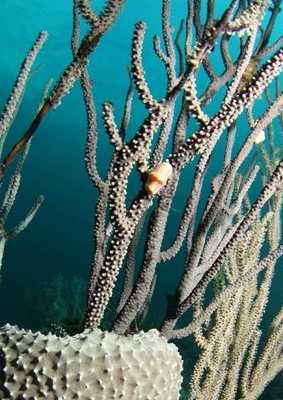Adaptation and Form
C.
gibbosum is about 1” long and has a peach colored shell with
a lateral cream colored stripe that runs the length of the
shell (PURA
VIDA Divers 2012).
The shell
appears to have yellow spots outlined in black but contrary to
many beliefs the spots are not actually on the shell, they are a
part of the snail’s mantle (PURA
VIDA Divers 2012).
The flamingo tongue snail has mantle flaps that protrude
and cover the shell
(Marine Invertebrates of Bermuda 2007).
When under stress or it feels the threat of an attack,
the snail retracts its mantle leaving the peach colored shell
exposed (Encyclopedia
Britannica 2013).
The mantle
also acts as a set of gills that allow the snail to take in
oxygen and expel carbon dioxide (Marine
Invertebrates of Bermuda 2007).
The snails foot is its form of
locomotion.
Like most prosobranchs it is a slow moving snail that uses
undulation and pedaling to move (Marine
Invertebrates of Bermuda 2007).
Flamingo Tongue Snail with retracted mantle (Shari Morris. 2010.)
